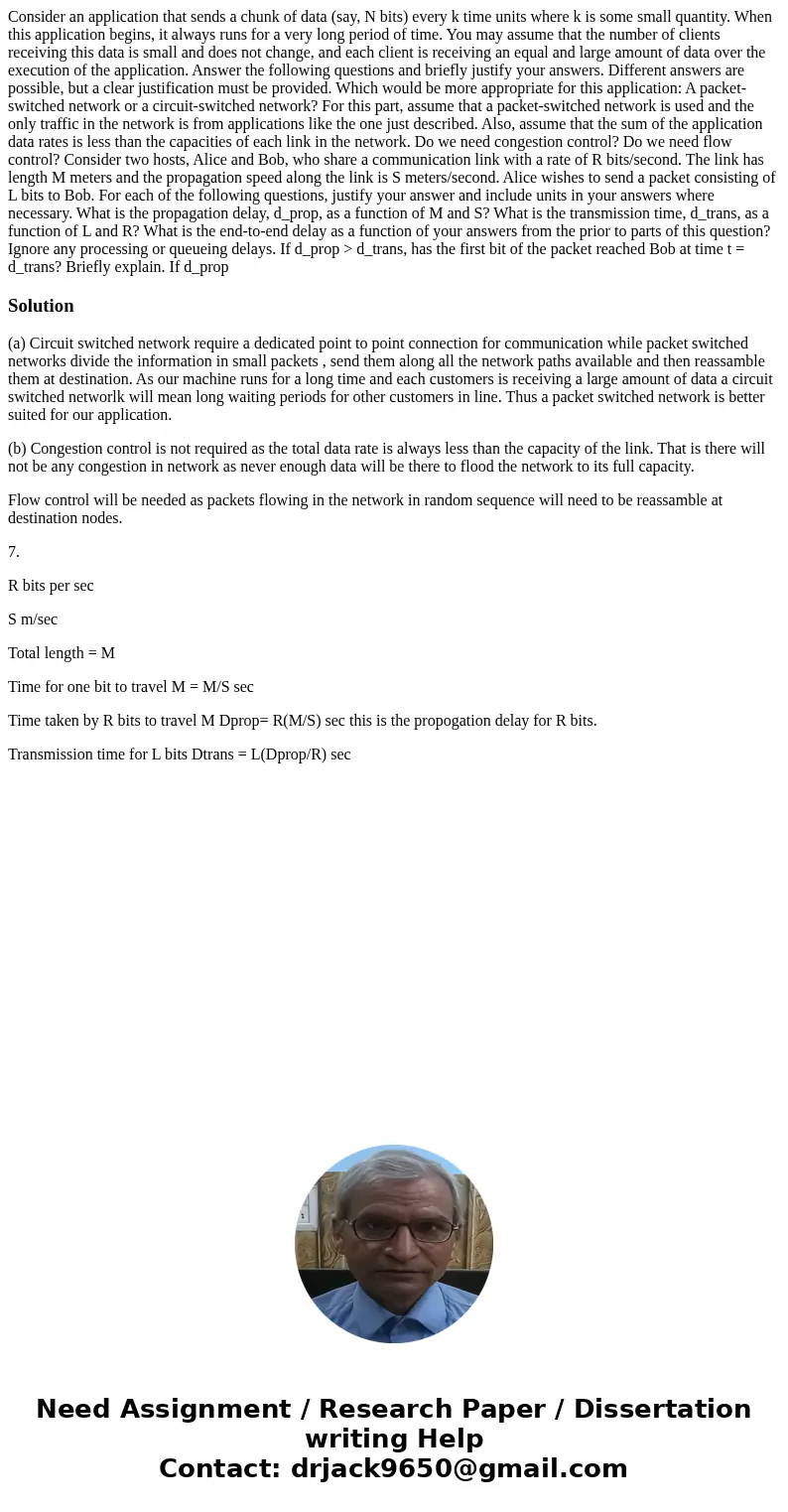Consider an application that sends a chunk of data (say, N bits) every k time units where k is some small quantity. When this application begins, it always runs for a very long period of time. You may assume that the number of clients receiving this data is small and does not change, and each client is receiving an equal and large amount of data over the execution of the application. Answer the following questions and briefly justify your answers. Different answers are possible, but a clear justification must be provided. Which would be more appropriate for this application: A packet-switched network or a circuit-switched network? For this part, assume that a packet-switched network is used and the only traffic in the network is from applications like the one just described. Also, assume that the sum of the application data rates is less than the capacities of each link in the network. Do we need congestion control? Do we need flow control? Consider two hosts, Alice and Bob, who share a communication link with a rate of R bits/second. The link has length M meters and the propagation speed along the link is S meters/second. Alice wishes to send a packet consisting of L bits to Bob. For each of the following questions, justify your answer and include units in your answers where necessary. What is the propagation delay, d_prop, as a function of M and S? What is the transmission time, d_trans, as a function of L and R? What is the end-to-end delay as a function of your answers from the prior to parts of this question? Ignore any processing or queueing delays. If d_prop > d_trans, has the first bit of the packet reached Bob at time t = d_trans? Briefly explain. If d_prop
(a) Circuit switched network require a dedicated point to point connection for communication while packet switched networks divide the information in small packets , send them along all the network paths available and then reassamble them at destination. As our machine runs for a long time and each customers is receiving a large amount of data a circuit switched networlk will mean long waiting periods for other customers in line. Thus a packet switched network is better suited for our application.
(b) Congestion control is not required as the total data rate is always less than the capacity of the link. That is there will not be any congestion in network as never enough data will be there to flood the network to its full capacity.
Flow control will be needed as packets flowing in the network in random sequence will need to be reassamble at destination nodes.
7.
R bits per sec
S m/sec
Total length = M
Time for one bit to travel M = M/S sec
Time taken by R bits to travel M Dprop= R(M/S) sec this is the propogation delay for R bits.
Transmission time for L bits Dtrans = L(Dprop/R) sec

 Homework Sourse
Homework Sourse